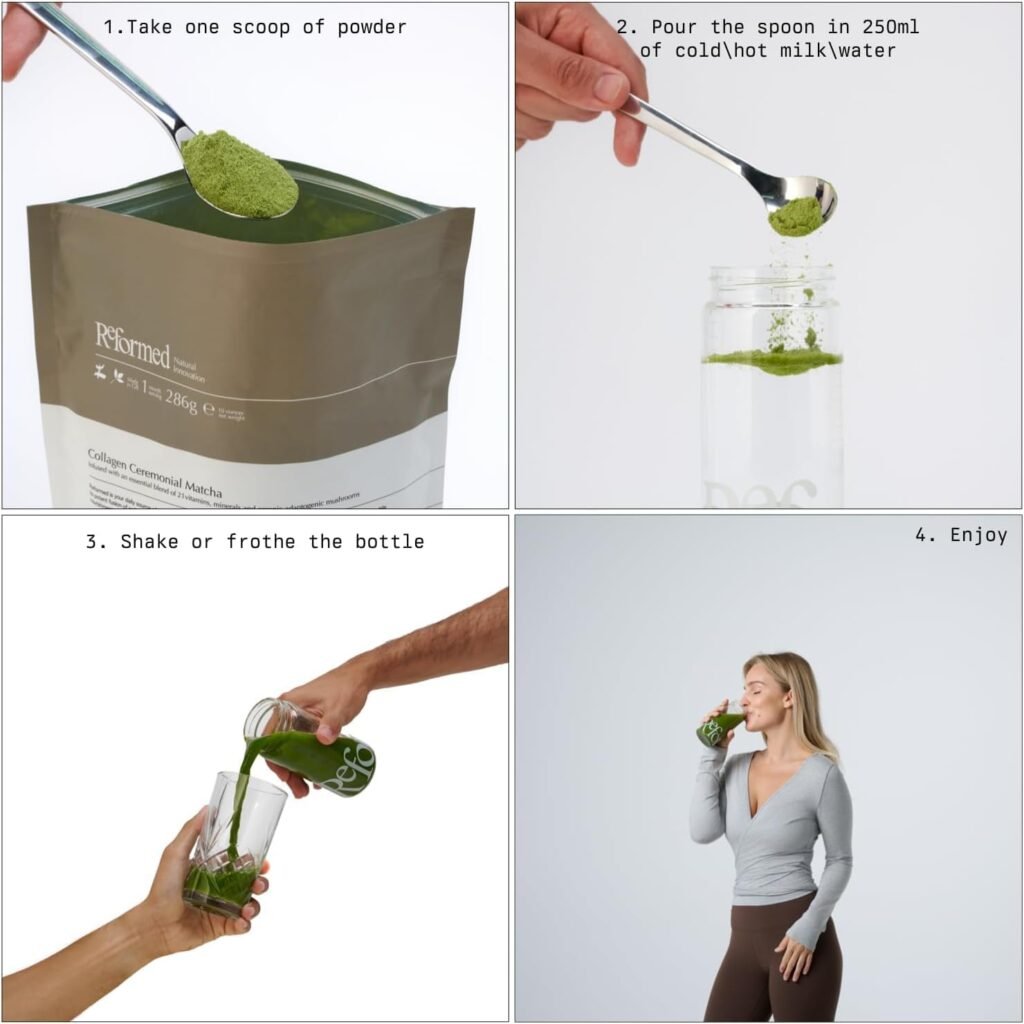
What Makes Matcha and Other Infusions Special?
Matcha, a finely ground green tea powder, stands out among tea infusions due to its unique cultivation process and its distinctive nutritional profile. Unlike traditional green tea, where the leaves are steeped and removed, matcha involves consuming the whole leaf, providing a higher concentration of nutrients. This preparation method results in an infusion rich in antioxidants, particularly catechins, which are known for their numerous health benefits.
One of the most significant advantages of matcha is its high antioxidant content. Antioxidants are crucial in combating oxidative stress, which contributes to numerous chronic diseases. Additionally, matcha contains L-theanine, an amino acid that promotes relaxation without drowsiness, leading to improved mood and enhanced mental clarity. This juxtaposition of energy enhancement and calming effects makes matcha an ideal choice for those seeking both physical and mental support.
When comparing matcha to other types of tea, such as green tea, white tea, and black tea, notable differences emerge. Green tea, while also high in catechins, does not offer the same concentration of nutrients due to the steeping process. White tea contains fewer processing steps than black tea, yielding more antioxidants than traditional black tea but less than matcha. The flavor profiles also vary significantly; matcha has a vibrant, umami taste, while green tea is often described as grassy, and black tea tends to be robust and bold.
Each infusion also has distinctive effects on metabolic health. Consuming teas can naturally boost metabolism, promote fat oxidation, and aid in weight management, making matcha and its counterparts valuable additions to a balanced diet. Understanding the unique qualities of matcha and other infusions allows individuals to tailor their tea choices to optimize health benefits and flavor experiences.
Ritual and Preparation: Mastering the Art of Matcha
Preparing matcha is an art form that involves careful attention to detail, ensuring that both flavor and health benefits are maximized. The preparation process begins with selecting high-quality matcha powder, ideally from a reputable source, as the grade of matcha affects both taste and nutritional content. Once the right matcha has been chosen, the first step is to measure approximately one to two grams (around 1 to 2 teaspoons) of matcha powder into a bowl. This amount is suitable for making a single serving of traditional matcha.
Next, water temperature plays a crucial role in the preparation. It is important to use water that is not boiling, as excessive heat can lead to bitterness. The ideal temperature for matcha water is between 70°C to 80°C (158°F to 176°F). After heating the water, pour approximately 60 to 100 ml over the matcha powder in the bowl. This step ensures the matcha dissolves properly and maintains its vibrant green color.
The whisking technique is essential for achieving a smooth, frothy consistency. Using a traditional bamboo whisk known as a chasen, whisk the mixture in a zigzag motion, applying enough force to create bubbles and aerate the matcha. Aim for about 15-30 seconds of whisking; the goal is to create a velvety texture while avoiding clumps. For a variation like a matcha latte, steamed milk can be added after whisking the matcha, yielding a creamy and flavorful beverage. Additionally, cold brews are gaining popularity; simply mix matcha powder with cold water and whisk it until well combined. Experimenting with spices such as turmeric and cinnamon can create unique flavor profiles.
A quick visual guide may include images of the key steps: measuring matcha, pouring water, whisking, and serving. This can enhance understanding and support new enthusiasts in mastering the art of matcha preparation.
Recommendations: Quality Matcha and Accessories
When seeking high-quality matcha, it is essential to prioritize organic options. Organic matcha is sourced from tea leaves that have been cultivated without the use of synthetic pesticides or fertilizers, offering a purer taste and more health benefits. Look for brands that indicate their matcha is grown in shaded conditions, which enhances the chlorophyll content and results in a more vibrant green color, indicative of its freshness and quality. Renowned regions for producing premium matcha include Uji and Nishio in Japan, both known for their rich soil and suitable climate, which contribute to the superior taste and nutrition of their tea.
In addition to selecting the right matcha, investing in essential preparation tools can significantly elevate the matcha experience. A traditional bamboo whisk, known as a chasen, is crucial for achieving a smooth and frothy consistency when preparing matcha. The design of the whisk allows for optimal aeration of the tea, which enhances both flavor and texture. Additionally, a matcha bowl, or chawan, provides the necessary space for whisking, allowing the matcha to blend with water easily. For those seeking convenience, electric frothers can also be a good alternative for creating a well-blended drink, though they may lack the traditional touch.
Lastly, consider incorporating premium infusion accessories that pair beautifully with matcha. Items such as matcha-infused honey or flavored simple syrups can add an interesting twist to the classic matcha experience, creating unique beverages or desserts. For playful presentations, matcha latte art tools can enhance visual appeal. By thoughtfully selecting high-quality matcha and the right accessories, one can fully unlock the magic of matcha, enjoying not only its rich flavors but also its numerous health benefits.
Healthy Matcha Recipes and Scientific Benefits
Matcha, a finely ground powder made from specially grown green tea leaves, not only offers a unique flavor but also delivers numerous health benefits. Incorporating matcha into your diet can be both delicious and nutritious. Here are some healthy matcha recipes that highlight its versatility, along with scientific insights into its benefits.
One popular way to enjoy matcha is through a matcha latte. For this recipe, whisk a teaspoon of matcha powder with hot water until it becomes frothy. Then, add steamed almond milk for a creamy texture. This beverage combines the powerful antioxidants found in matcha with the healthy fats in almond milk, providing a delightful energy boost without added sugars.
For those seeking a quick and energizing option, consider preparing a matcha smoothie. Blend a teaspoon of matcha powder with your choice of fruits, such as bananas and berries, along with a scoop of protein powder and a base of almond or coconut milk. This smoothie not only enhances energy levels but also promotes muscle recovery due to the protein content, making it an excellent post-workout snack.
If you have a sweet tooth, matcha brownies are another healthy treat to consider. Replacing traditional cocoa powder with matcha adds vibrant color and health benefits. These brownies can be made using ingredients such as almond flour and natural sweeteners, resulting in a delicious dessert that is rich in antioxidants.
Several scientific studies support the health benefits of matcha. Research has indicated that matcha possesses high levels of catechins, particularly epigallocatechin gallate (EGCG), which is known for its potent antioxidant properties. These compounds can help combat oxidative stress, reduce inflammation, and may even aid in promoting metabolic health. Additionally, matcha is linked to stress reduction, enhancing relaxation without inducing drowsiness, thanks to the presence of L-theanine, an amino acid found in tea.
In conclusion, incorporating matcha into various recipes not only elevates their flavors but also delivers impressive health benefits. From matcha lattes to brownies, these recipes allow you to enjoy the magic of matcha while reaping its scientifically-backed advantages.


